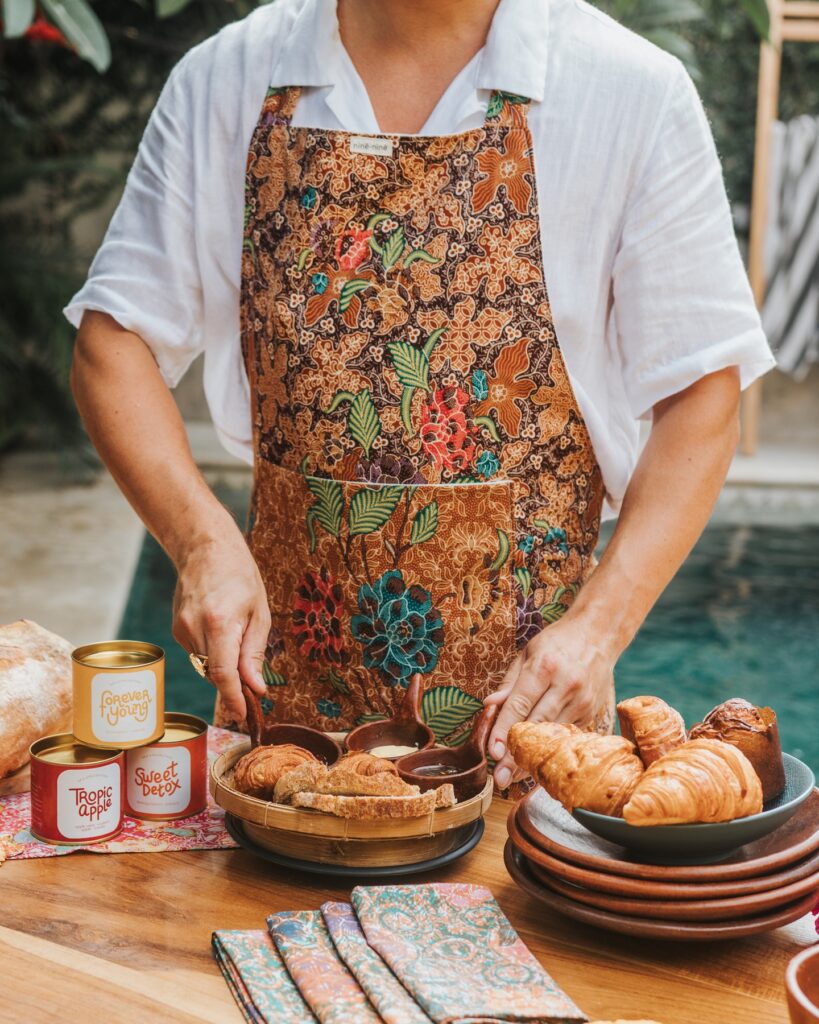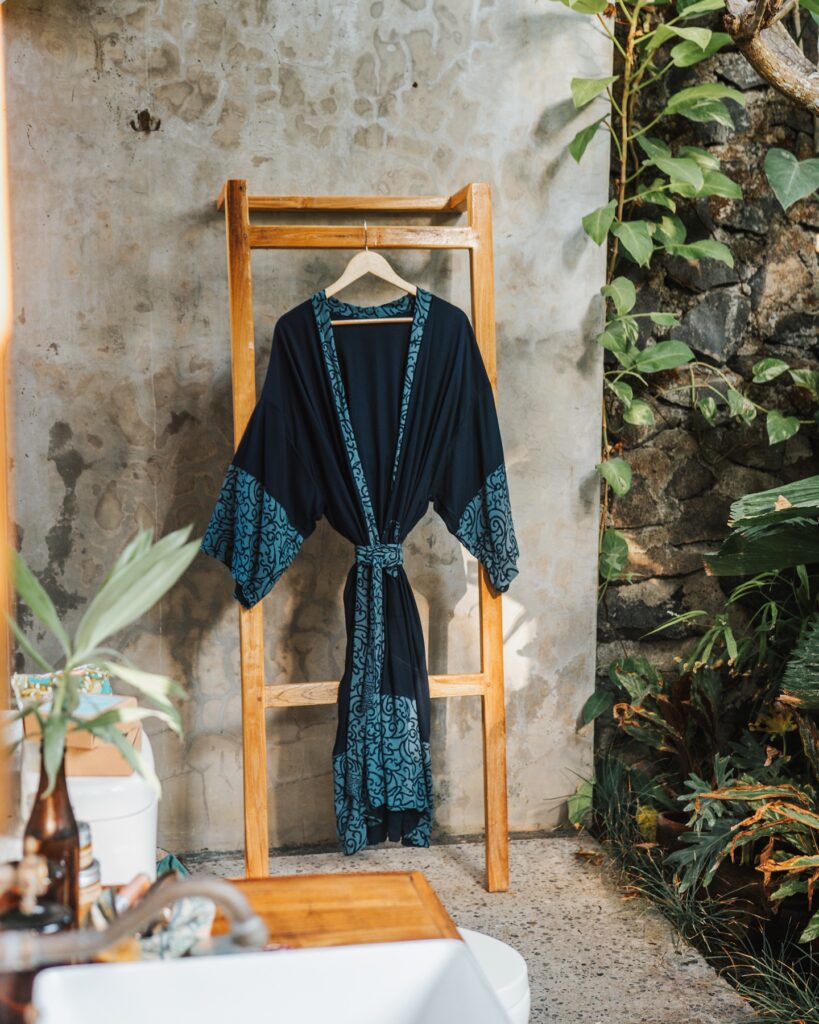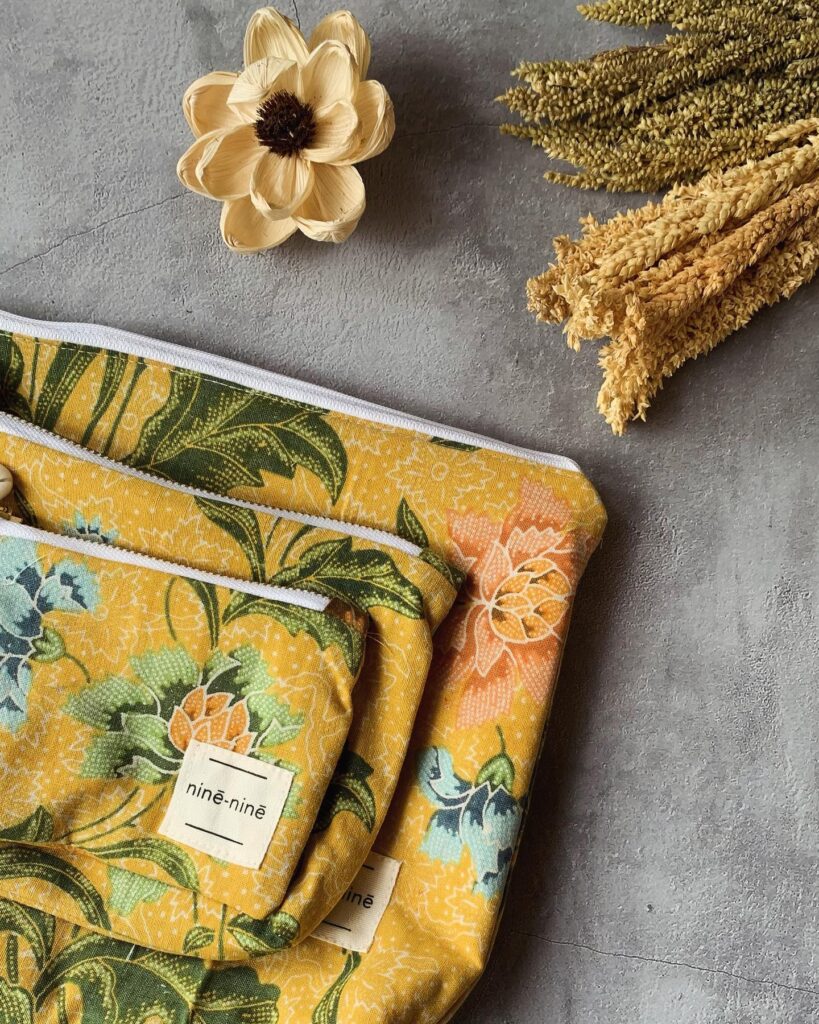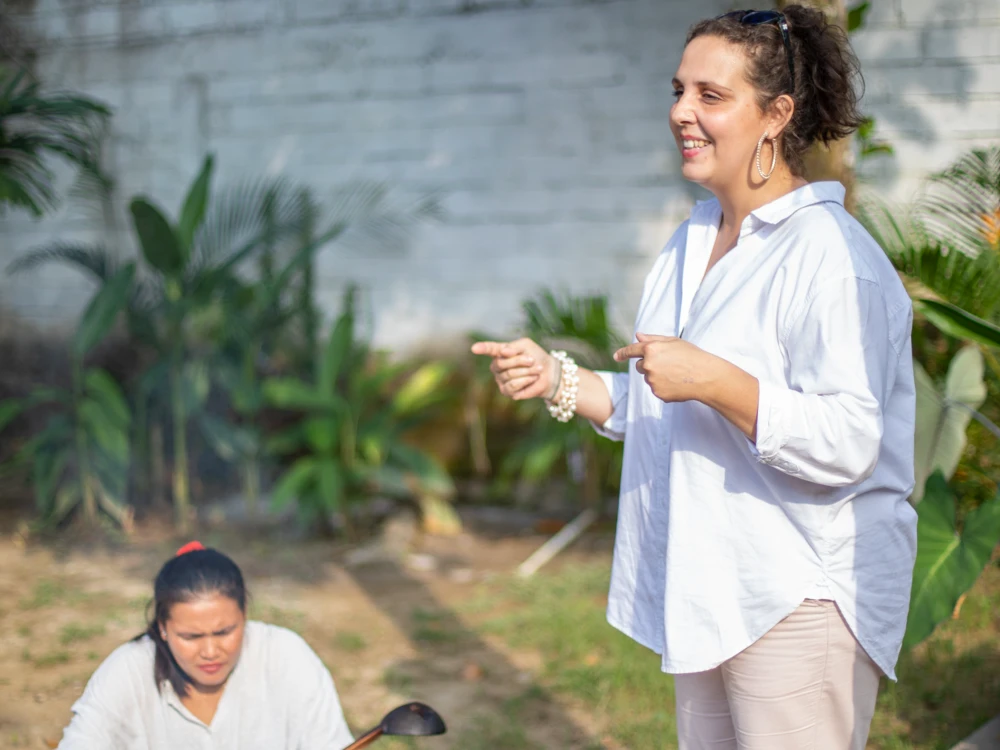This interview has been edited for clarity and brevity.
Meet Lulu, the dynamic and entrepreneurial spirit behind ninē-ninē – a social business that gives a safe space to local women and helps preserve Sasak culture on Lombok.
Originally from France, Lulu’s journey began with a lost sarong and blossomed into a vibrant enterprise that seeks to empower the women of Lombok.
By turning time-honoured fabrics into upcycled batik, baby slings and more, Lulu and her team are weaving threads of tradition into the fabric of contemporary life, ensuring every creation tells a story of resilience and beauty.
Xanadu is proudly partnered with Lulu and ninē-ninē. We not only back the preservation of Sasak culture and promote the role women play in Lombok society, but we also take our retreat guests to their amazing Coco Sambal Coffee Workshops held every week!
Learn more about Lulu and Ninē-Ninē below. Enjoy!



Hi, Lulu. How are you?
I’m good, I’m good. It’s nice to talk to you.
Happy that we could catch you for a chat. Can you introduce yourself for our readers?
Sure! I’m Lulu, or Lucile. I’m 34 and I’ve been living in Lombok for about 10 years. I married here about 8 years ago and I have 4 kids. And on a daily basis I take care of ninē-ninē, which I founded with a very good local friend called Sani.
What is ninē-ninē all about and what does “ninē-ninē” mean?
Ninē-ninē means “woman” in Sasak, and it’s a social business based in Kuta that we launched in 2017.
Initially, it focused on weaving and creating woven products by working with older women who use traditional looms. In 2020 we started upcycling, which has become our main focus due to its success. We also offer traditional workshops.
Most importantly though, we aim to provide a safe space for women to work and a place where we can highlight the traditions and the culture from Lombok.
That’s what we do through handweaving and through upcycling – use the beautiful fabrics that they already have.
Why is it important that Sasak culture is preserved and promoted through ninē-ninē?
Because we want people to appreciate the Sasak traditions, people and culture of Lombok.
Yes, the ninē-ninē projects are beautiful, but so is everything from Lombok! We want visitors to see and experience the richness of what has always been here. The culture here is incredibly creative, fun, ancient and strong minded. It holds significant value for everyone, especially women.
Their fabrics and weaving are stunning, the culture is vibrant and the food is delicious. We want to invite people to come and see everything we can achieve with the resources already here.
It’s all about appreciating the local heritage and what has always been present.
Amazing. We’re curious… how did you first connect with the local weavers and come up with the idea for ninē-ninē?
Well, I married into the culture here and learned that the women weave handwoven sarongs for the men as a form of protection. It’s all quite magical!
Then, when I had my first son, I had to take him to Jakarta to get his passport and I brought my husband’s sarong (a gift from his mom) with me.
Unfortunately, I left it on the plane! His mom had passed away and it was the last thing he had from her. It was a tricky moment, and I felt ashamed to tell him I lost it.
I decided to weave a new one to make up for it. I looked for someone in the village to teach me, and that’s how I met Sani, who is now a very close friend. Sani’s mother taught me to weave and I made a sarong.
It wasn’t great, but it was a start. Through this process, I realised it was possible to change the colours and designs slightly to modernise them. The idea came quickly to have older women weave while making the colours more appealing to Westerners.
Now you’re making products such as baby slings and supporting women in the local community who might otherwise not have an income. Can you tell us a bit more about that?
Yes, the baby slings are part of our handwoven collection. For the baby slings, we designed a special piece for our loom to weave wider fabrics, eliminating the need for sewing. This makes the slings incredibly strong and durable.
As for upcycling, our goal was to promote a circular economy and involve as many women as possible. However, we faced challenges because not all women could weave or sew which means they couldn’t be included in the process, which we found really annoying.
To address this, we decided to buy unwanted sarongs directly from local women. This allowed any woman who was in need of money to come and sell her sarongs to us.
What about the role of Sasak women in the community? Coming from a Western nation, what were your views on this when you first arrived?
Initially, I thought the women were overly devoted to the men around them. However, I soon realised they have much more power than I first understood… even if it’s not “official”.
Now that I know how things work here, I see that women carry a lot on their shoulders and that the men would struggle without them! Women are still considered below men and expected to stay at home and do chores, but in reality, they are in charge of everything.
They maintain traditions, preserve culture, care for children and even manage much of the black magic and protection practices.
So interesting!
It is!
There’s a beautiful story here whereby whenever thieves or any trouble arises in the village, the men don sarongs woven by women and run to address the issue. The first time this happened while I was there, all the men including my husband left.
During all of this commotion, I saw the women sitting outside laughing. I asked if they were scared that the thieves would return and they said no, because no one would attack women.
It turns out that when a woman weaves, she imbues her weaving stick with black magic. This stick becomes powerful and deadly to men, leaving shameful scars if used against them.
Men would never attack a house knowing there is a weaving stick inside. By weaving protective sarongs, women ensure the safety of their homes!
In this way, women silently carry the burden of protection and responsibility while men show off outside.
Did you find it difficult to integrate into the community and understand these cultural dynamics?
Well, when I first moved into the village, there was a big fear that I would change everything. Many women were hesitant to befriend me because they were worried I’d disrupt their way of life.
In a gendered society where roles are clear, there’s a certain comfort. These women were very comfortable in their roles as Sasak women and excelled in them. They feared I might try to turn them into modern women, which I never intended.
However, I understand their fear since they are experts in their traditional ways. While I never tried to change them, the women who approached me and wanted to work with me were indeed looking for some change.
Is part of that change trying to educate locals on the role of sustainability in everyday life?
When it comes to sustainability I have a different perspective.
While the plastic and waste problem is visible because you see it on the ground, the way people live here is actually much more sustainable than in the Western world. I’ve learned and adapted more to their sustainable lifestyle than they could learn from mine.
For example, I’m very strict about not littering and ensuring our surroundings are clean. But we also only eat what the men catch from the ocean; no one here eats meat and consumption is minimal.
Water is drawn from wells and they use minimal electricity. Even their waste management is impressive. They use their sarongs until they are completely worn out, then repurpose them for cleaning.
Overall, there are many sustainable practices here that we could learn from.
That’s true. As Westerners, we often think of sustainability as something we need to teach others, but in reality, there are many things we can learn from different cultures and communities.
Exactly. When I conduct workshops on sustainability or waste reduction, I always emphasise avoiding plastic waste on the ground.
To be fair, this issue emerged about 20 years ago with modernity, originating not from local villages but from Jakarta, which in turn adopted it from the West.
We introduced plastic without educating people about its impacts. They aren’t aware that burning plastic near children can poison them or that plastic waste doesn’t just disappear.
This knowledge is slowly spreading, but there’s still a long way to go.
It’s great to have a balanced perspective on sustainability and recognise the positive practices in place here. It seems like your involvement with the community has brought about some positive changes! Do you have big plans for ninē-ninē going forward?
Yes! We’re opening a cafe specialising in Sasak and Lombok cuisine, offering unique dishes like flower curry and seaweed that you won’t find elsewhere.
We’re also creating a space for women to learn sewing, providing free training in exchange for working with us for a year. We would love to revive traditional weaving and natural dyeing techniques that have been lost in South Lombok. Our goal is to have experts teach these skills locally or send trainees to learn them.
We’re going to host our second fashion show featuring handwoven products soon too, so look out for that!
Can’t wait! Last but not least, we were told to ask you about the nature of flirting in Lombok. Given you’re married to a local man, you must have some insider info!
(Laughter) sure.
There are several ways to flirt here and one old-school method, though not as common now, involves smoking.
Guys would start smoking early because it was a way to talk to girls. The guys would bring cigarettes and the girls would carry lighters.
If a guy liked a girl, he would ask her to light his cigarette. If she liked him back, she would light it. If not, she would say, “Oh, I’m sorry, I left my lighter at home,” or “I didn’t bring a lighter today.” It was a cute way to refuse someone.
Another way to flirt here is with coffee. Making coffee for someone is very flirty. Asking if they want a coffee or just bringing them one out of nowhere is a clear sign of interest.
Thanks for that insight, Lulu. And thanks for chatting with us. Hopefully your husband makes you plenty of coffee now!
Yes, there’s been plenty of coffee making since we met. Thank you very much too. Bye!
You can meet Lulu and learn more about ninē-ninē during our Coco Sambal Coffee Workshop – held every week at our retreats.
You can also follow ninē-ninē online here or visit their studio the next time you’re in Lombok. Every purchase supports local women and helps preserve the beautiful Sasak culture that we all love!




